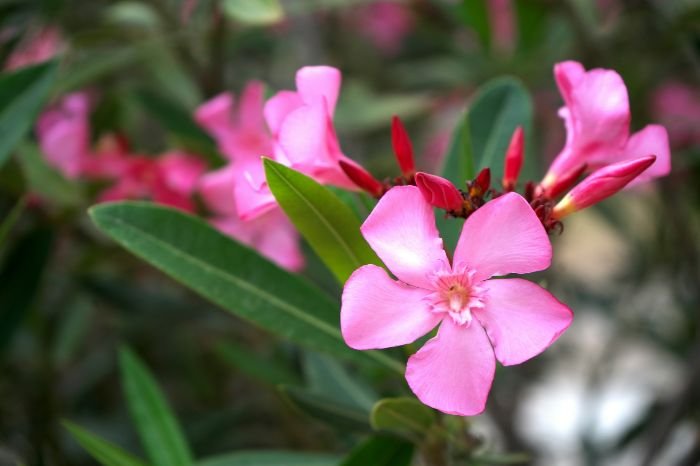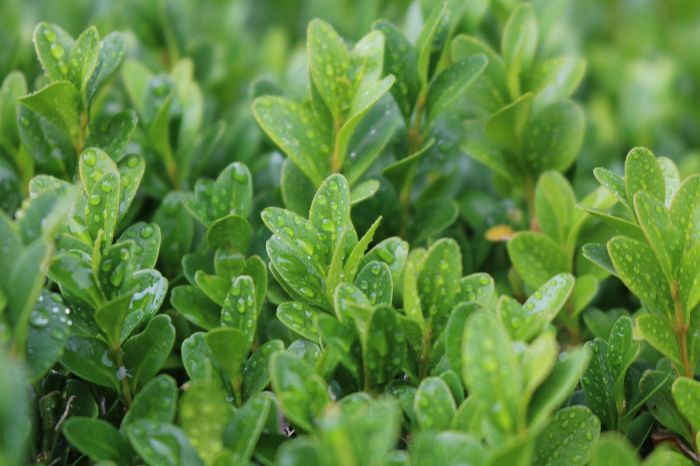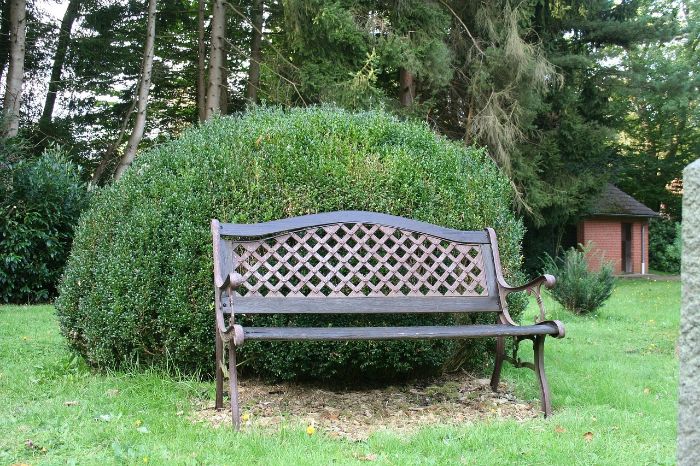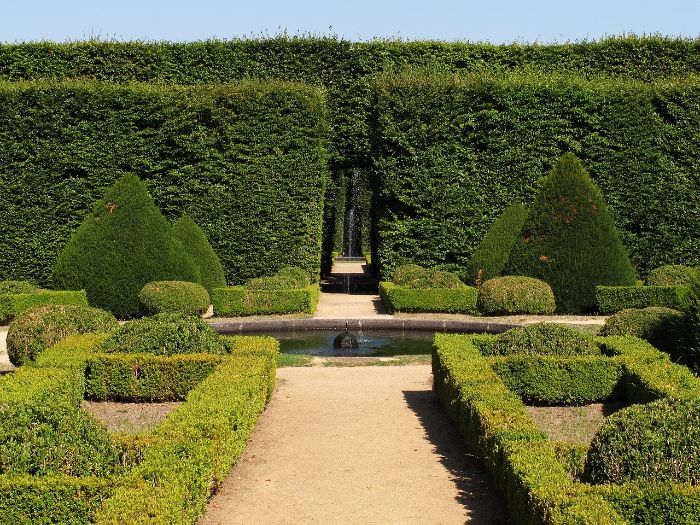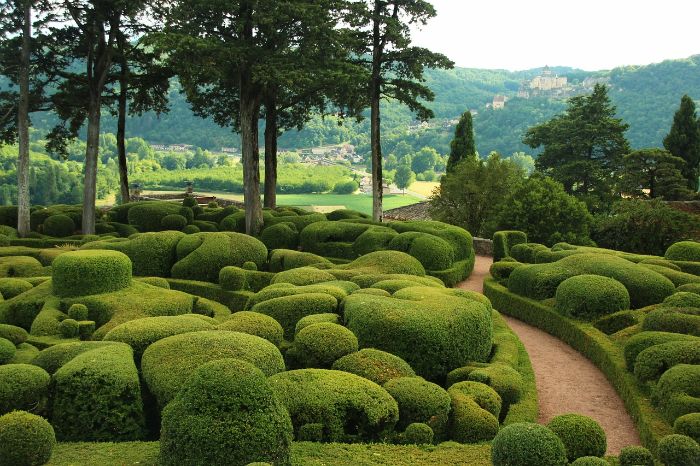Oleander is a captivating shrub that has amazed garden lovers and landscapers for many years. Its beauty and striking blooms make any garden more elegant. But, did you know it has some hidden dangers?
We will look at what makes oleander so beautiful and risky in this article. We will talk about its pretty flowers and shiny leaves. We will also discuss its toxicity and how to be careful when dealing with it.
What is it about oleander that makes it both lovely and dangerous? Let’s dive in to find out more about this interesting shrub.
Key Takeaways:
- Oleander is a captivating and versatile shrub that has fascinated garden enthusiasts for centuries.
- It showcases stunning beauty with vibrant blooms and glossy foliage.
- Oleander is highly toxic and precautions must be taken when handling it.
Table of Contents
About Oleander
Oleander is a gorgeous, versatile shrub. It has been loved by garden fans for years. It brings color, form, and charm to gardens.
The Allure of Oleander in Gardens
Oleander is loved for good reason. Its colorful blooms and shiny leaves can turn any garden into a work of art. You can find flowers in pink, red, white, and yellow. They give your garden a magical look.
This shrub doesn’t just add color. It also brings shape and depth to your garden. Its height is great for focal points or hedges. Plus, its full leaves offer privacy or define areas.
Oleander thrives in various conditions, so knowing your local climate zone helps determine where it will flourish best. So, whether it’s sunny or tropical, you can enjoy oleander’s beauty.
Overview of Oleander Varieties
Oleander has many varieties, each with its special look. Some favorites include:
- Petite Pink – This small plant has pretty pink flowers. It’s great for tiny gardens or pots.
- Sister Agnes – It boasts big, white flowers. It can be a beautiful center in any garden.
- Sundance – This variety shines with its yellow blooms, adding a bright touch.
There are many more oleander types to choose from. Each offers its unique charm. You can find soft pinks, bright whites, or vivid yellows.
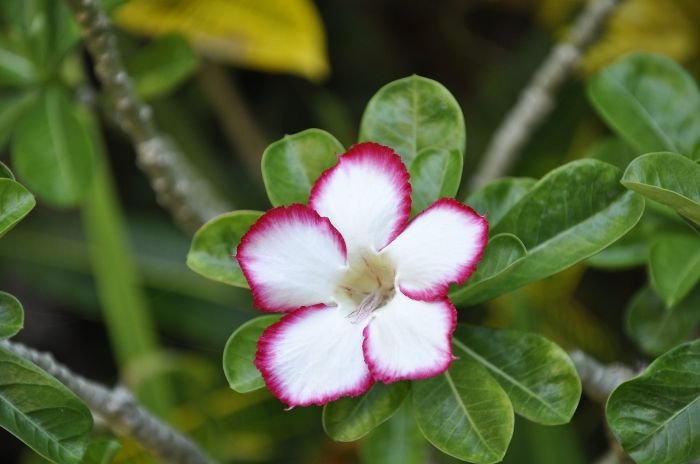
Gardeners use different oleander kinds to create beautiful landscapes. This shows just how versatile oleanders are.
Oleanders are in high demand for gardens worldwide. Their beauty graces outdoor spaces. In the upcoming section, we’ll dive deeper into what makes oleander so appealing.
Attractive Features of Oleander
Oleander is a striking, versatile shrub that’s loved by gardeners and landscapers alike. It boasts beautiful blooms in various colors and evergreen foliage. It’s known for its ability to withstand drought. These qualities make oleander a top pick for many.
Beautiful Blooms and Varied Colors
The blooms of oleander steal the show with their diverse colors. You’ll find shades of pink, white, red, and yellow. These flowers have pretty patterns and a lovely scent. Whether as a centerpiece or in a garden’s border, oleander’s blooms are always eye-catching.
Evergreen Foliage and Year-Round Appeal
Oleander’s ability to keep its leaves all year is a standout feature. This evergreen nature means it looks great and provides privacy no matter the season. It’s perfect for keeping a garden interesting through winter.
Drought Resistance and Low Maintenance
Its drought resilience places oleander among top heat tolerant plant varieties for gardeners in arid climates. It’s also perfect for those who prefer plants needing less care. Even without much water, oleander keeps its beauty and remains lively.
Oleander is not only drought-resistant but also low maintenance. It flourishes in different soils and stays mostly free of pests and disease. For busy gardeners, it’s an ideal choice since it doesn’t demand much work.
Growing Oleander in Your Garden
Ideal Climate and Soil Conditions
Before you plant oleander, know the perfect climate and soil for it. It loves warm, sunny places. This makes it great for areas like the Mediterranean.
It likes well-drained soil that’s full of organic matter. But, avoid too much water, like in heavy clay. If your soil is heavy clay, add compost or sand to help it drain better.
Planting Tips for Healthy Growth
Oleander needs a sunny spot, getting sun all day or for six hours. It loves bright light.
Make sure to space your oleander plants 6 to 10 feet apart. This keeps them from crowding as they grow.
When planting, dig a wide and shallow hole. Place the plant at the same depth as it was in the nursery pot. Fill around the roots with soil, pressing gently to remove air.
Watering and Fertilizing Requirements
Oleander doesn’t need much water after it’s grown. But, give it water during long dry spells, especially when it’s young.
Water deeply, but not often. Let the soil dry a bit between each watering. This helps oleander develop strong roots.
Oleander likes balanced plant food. Use a slow-release fertilizer for flowering plants in the spring. Follow the package directions. You can give it liquid plant food during growing season to encourage more blooms.
Care and Maintenance of Oleander
Taking good care of your oleander shrubs is key to their health. You need to know how to prune them, keep pests away, and care for them throughout the year. This ensures your plants grow beautifully.
Pruning for Shape and Health
Pruning is vital for oleanders’ health and form, and following a seasonal pruning guide ensures you cut them back at the optimal times. Regular pruning gets rid of dead or sick branches. It lets air flow better and helps new flowers grow.
Always use sharp, clean tools when cutting oleanders. This keeps them from getting sick. First, cut away dead or sick branches. Then, prune to shape the shrub. Take out any branches that are too close or rub against each other.
You should prune your oleander at the end of winter or start of spring. This way, it has time to grow new wood before the flowering season.
Pest and Disease Management
Oleanders can get pests and diseases. Aphids, scale insects, and spider mites are common. They can harm the plant by eating the leaves or sucking the sap.
Check your plants often for pests, and consider natural pest control methods, like ladybugs or neem oil, before resorting to stronger chemicals. Remember not to use too much, and read and follow the product’s instructions.
Fungus can also be a problem, causing powdery mildew or leaf spot. Water the plants at their base and give them enough space to let the air through. Use fungicides if needed.
Seasonal Care Tips
Oleanders need different care in each season to stay healthy. Here are tips for each season:
- Spring – Watch for new growth in spring. Trim branches that were hurt by frost. Use balanced fertilizer to help them grow strong.
- Summer – In summer, oleanders might need more water. Water them well to help their roots go deep. Mulch around them to keep the soil moist.
- Fall – When fall comes, cut back on watering to avoid root rot. Also, stop adding fertilizer. This helps prevent damage from frost.
- Winter – Keep your oleanders safe from the cold with mulch or frost blankets. This protects the roots from freezing.
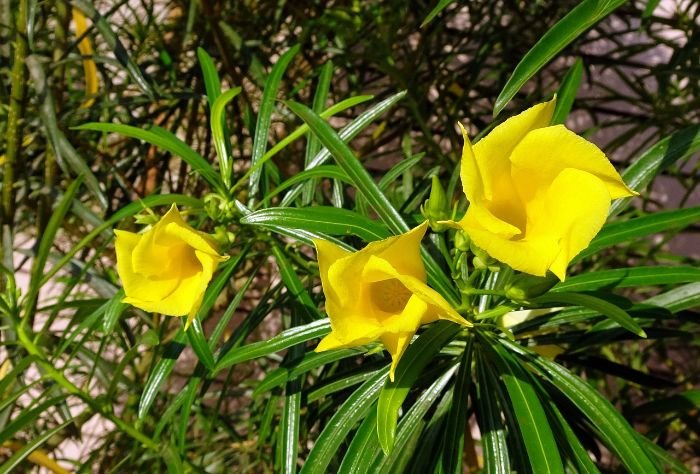
By caring for your oleanders throughout the year, they will reward you with beautiful blooms and green leaves.
Toxicity Warnings
Oleander is a beautiful shrub that grows in gardens. But, it’s toxic and can be harmful. It’s important to know this to keep everyone safe. Know what makes oleander dangerous, see the signs of poisoning, and take safety steps when you deal with it.
Understanding Oleander’s Toxic Components
Oleander has toxic parts like oleandrin and nerioside. These can hurt us if we eat them or they touch cuts. Be very careful with oleander because it is poisonous.
Symptoms of Oleander Poisoning
If people or pets swallow or touch oleander, they might get sick. Symptoms can include feeling sick and heart problems. If you think someone is poisoned, get help fast.
Safety Precautions for Gardeners and Pets
Always protect yourself when dealing with oleander. Wear gloves and eye protection to stay safe. Also, don’t let it touch your mouth or any cuts. Keep it away from kids and pets to stop them from getting hurt.
By learning about oleander’s dangers and how to be safe, we can enjoy its beauty. It’s all about staying smart and keeping others safe.
Oleander in Landscape Design
Oleander is a favorite for landscape design because of its versatility and beauty. It’s often used in gardens, with other plants that complement its foliage, and in hedges or borders for structure. Incorporating basic landscape design principles ensures oleander’s vibrant blooms and evergreen foliage fit cohesively into your overall layout.
Creative Uses for Oleander in Garden Design
Oleander stands out in gardens, bringing elegance and charm. Its bright flowers and shiny leaves catch the eye and add color.
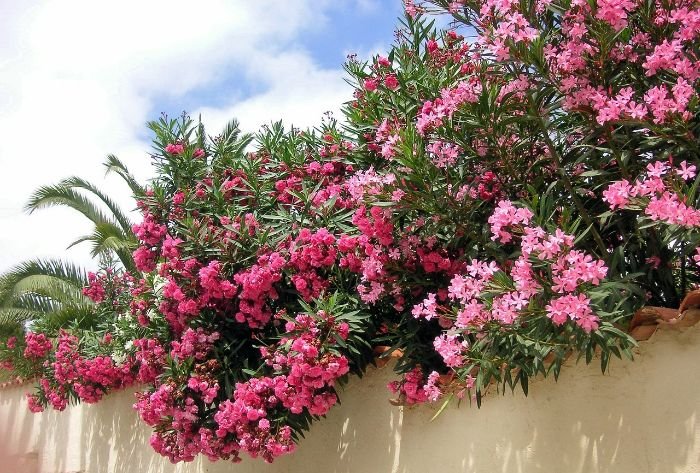
Placing oleander carefully can make your garden look great. Use it in the middle of garden beds or at the end of paths. This makes everything look balanced and harmonious.
Companion Plants that Complement Oleander
Choosing the right plants that work well with oleander can make your garden look even better. These plants should match oleander in looks, how they grow, and what they need. This helps make your garden balanced and pretty.
Some good plants to pair with oleander are:
- Agapanthus
- Salvia
- Lavender
- Rosemary
- Bougainvillea
These plants not only like the same growing conditions, but they also add to the garden’s beauty. They bring in different colors and feels that make the garden lovely.
Incorporating Oleander in Hedges and Borders
Oleander works well in hedges and borders. Its dense leaves and ability to be trimmed can make barriers and add privacy. They also create clear garden lines.
Think about how tall and wide you want your oleander to be when using it in hedges. Regular trimming is essential to keep the shape and size you want.
Make your garden’s edge striking by planting oleander there. Or, use oleander to make a natural fence that’s both private and beautiful.
Be careful with oleander in hedges and borders, especially if kids or pets are around. Remember it’s harmful if eaten or touched. Always be safe and warn others about it.
Handling Oleander Safely
It’s key to be safe around oleander. This plant is toxic and needs careful handling. But, by following some tips, you can keep safe and still enjoy its beauty.
Protective Gear for Pruning and Handling
If you’re cutting or touching oleander, wear protective gear. Gloves, eyewear, and long sleeves protect you from the plant’s toxins. This gear helps avoid skin problems and other bad reactions.
Safe Disposal of Oleander Clippings
Properly getting rid of oleander clippings is important. After cutting, gather and dispose of the clippings safely. Put them in sealed bags and in the trash to keep kids and pets away from them.
Educating Family and Visitors About Oleander Risks
Telling family and friends about oleander keeps them safe. Let them know it’s toxic and the dangers of touching or eating it. This educates everyone to avoid it, preventing accidents.
With the right safety steps, you can enjoy oleander’s beauty safely. Always use protective gear, throw away clippings properly, and teach others about its risks. These actions ensure you and your loved ones stay safe around oleander.
Alternatives to Oleander
Oleander, though pretty, is toxic. This can worry some gardeners. But, there are other plants that look just as good and are safe. They bring color, shape, and grace to your garden without the danger.
Non-Toxic Plants with Similar Aesthetic Appeal
- Hibiscus – Hibiscus is a great choice with its big, colorful blooms. It suits both tropical and cooler areas well.
- Butterfly Bush – Butterfly bush is loved for its scent and attracts helpful insects. It blooms in colors like purple, pink, and white.
- Rose of Sharon – This plant has blooms that look like hollyhocks. It flowers late summer in shades of white, pink, and purple.
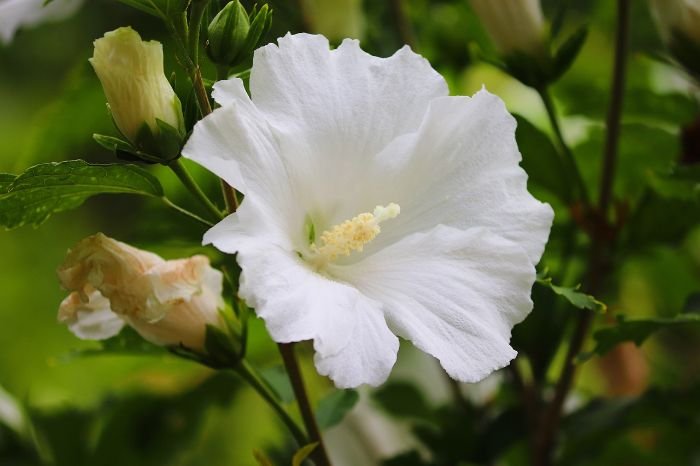
Adding these plants to your garden is a win-win. You get beauty and peace of mind. They’re safe for kids and pets.
Comparing Oleander with Other Popular Shrubs
Choosing the right shrubs needs thought. We compare oleander with other favorites to help you choose wisely:
- Visual Characteristics – Oleander’s colorful blooms are beautiful. But, hibiscus, butterfly bush, and rose of Sharon are just as lovely. They each have unique looks that fit different garden styles.
- Care Requirements – Oleander is easy to care for and good in dry places. Hibiscus and butterfly bush are also low-effort. Rose of Sharon is easy too, but may need extra care in the cold.
- Suitability for Climates – Oleander needs warm, sunny spots and struggles in the cold. Hibiscus, butterfly bush, and rose of Sharon are more flexible. They grow well in many places.
Think about these points when choosing shrubs. Whether you go with oleander or its safe counterparts, your garden will be beautiful and calm.
Conclusion – Balancing Beauty and Safety
We’ve looked at the pretty yet risky sides of oleander in this article. Its bright flowers and green leaves are loved by many. But it’s also very toxic, so we must be careful around it.
Enjoying oleander safely means being a smart gardener. Always wear protective clothes when you work with it. This protects you from its dangers.
Don’t forget to tell your family and friends about oleander’s risks. Make sure they know how to stay safe around it. With this knowledge, you can have a beautiful garden that’s also safe.
FAQ
What are the risks associated with oleander?
Oleander is very dangerous if eaten or touched. It contains harmful parts like oleandrin and nerioside. These can lead to sickness, heart problems, and severe issues if not handled safely.
What are some popular oleander cultivars with notable features?
‘Petite Pink’, ‘Sister Agnes’, and ‘Sundance’ are well-liked oleander types. ‘Petite Pink’ is loved for its small size and bright pink flowers. ‘Sister Agnes’ stands out with its white petals and yellow centers. ‘Sundance’ is recognized by its yellow blooms and mixed green leaves.
How do you properly prune oleander?
To keep oleander in good shape, it’s important to prune it. Do this during late winter or early spring. Cut off any dead or damaged parts. Then, shorten the remaining branches to make it look neat.
What are the ideal climate and soil conditions for growing oleander?
Oleander likes hot, sunny areas and soil that drains well. It does well in places with little water too. But, be careful not to let its roots sit in water as this causes problems.
How often should oleander be watered and fertilized?
Water oleander deeply every week if it’s dry for a healthy plant. Give it fertilizer that’s balanced three times a year. The best times for this are in the spring, summer, and fall.
What are the symptoms of oleander poisoning?
If someone gets poisoned by oleander, they might feel sick, have stomach pain, or heart issues. It can even cause seizures or death in bad cases. Getting help from a doctor right away is very important.
What are some creative uses for oleander in garden design?
Oleander is great for drawing attention or as a focal part in gardens. Its vibrant flowers and green leaves bring beauty and structure. They also give a feeling of grace to outdoor areas.
How should oleander clippings be safely disposed of?
Dispose of oleander clippings correctly to prevent harm. Put them in a sealed bag or container and throw them in the trash. Never burn or use them for compost.
Are there non-toxic alternatives to oleander that offer similar aesthetic appeal?
Indeed, there are safe plants that are as pretty as oleander. Hibiscus, butterfly bush, and rose of Sharon are some options. They bring color and attract good bugs without the dangers of oleander.






